Cai Wen
Interleaved Transceiver Design for a Continuous- Transmission MIMO-OFDM ISAC System
Aug 14, 2025Abstract:This paper proposes an interleaved transceiver design method for a multiple-input multiple-output (MIMO) integrated sensing and communication (ISAC) system utilizing orthogonal frequency division multiplexing (OFDM) waveforms. We consider a continuous transmission system and focus on the design of the transmission signal and a receiving filter in the time domain for an interleaved transmission architecture. For communication performance, constructive interference (CI) is integrated into the optimization problem. For radar sensing performance, the integrated mainlobe-to-sidelobe ratio (IMSR) of the beampattern is considered to ensure desirable directivity. Additionally, we tackle the challenges of inter-block interference and eliminate the spurious peaks, which are crucial for accurate target detection. Regarding the hardware implementation aspect, the power of each time sample is constrained to manage the peak-to-average power ratio (PAPR). The design problem is addressed using an alternating optimization (AO) framework, with the subproblem for transmitted waveform design being solved via the successive convex approximation (SCA) method. To further enhance computational efficiency, the alternate direction penalty method (ADPM) is employed to solve the subproblems within the SCA iterations. The convergence of ADPM is established, with convergence of the case of more than two auxiliary variables being established for the first time. Numerical simulations validate the effectiveness of our transceiver design in achieving desirable performance in both radar sensing and communication, with the fast algorithm achieving comparable performance with greater computational efficiency.
Joint Design of ISAC Waveform under PAPR Constraints
Nov 20, 2023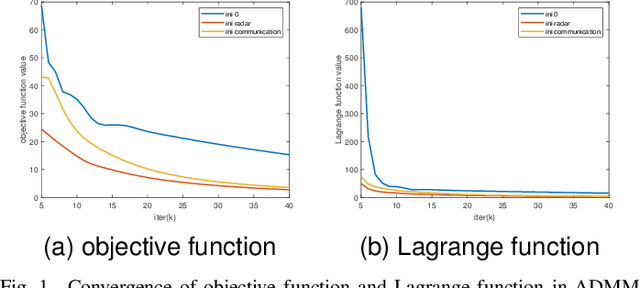
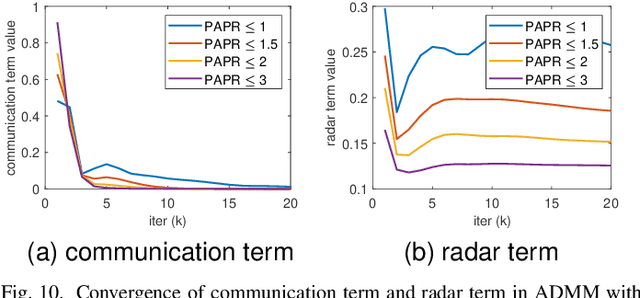
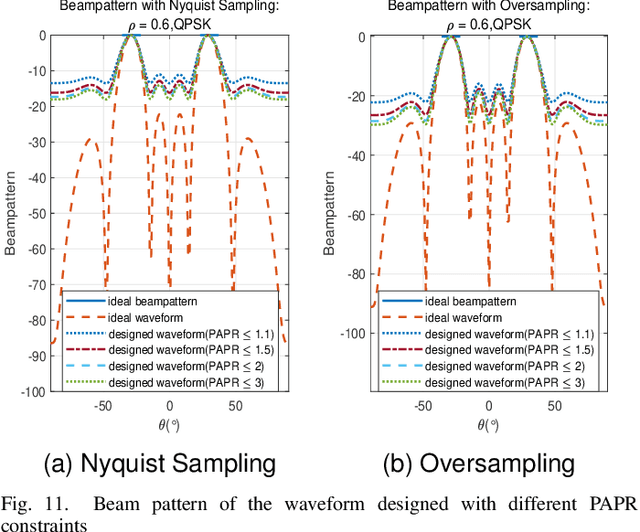
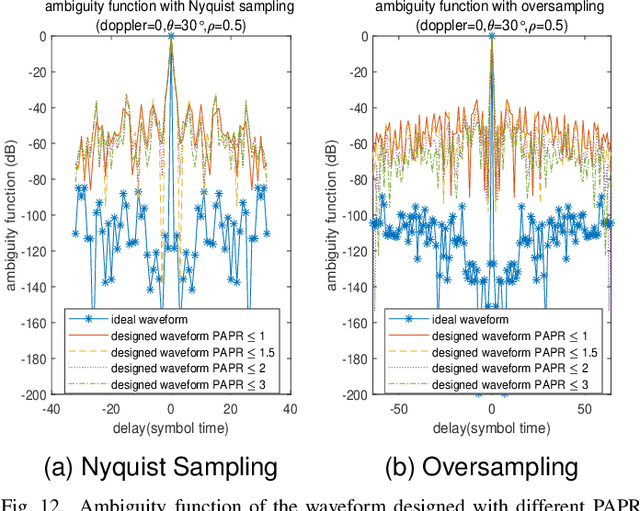
Abstract:In this paper, we formulate the precoding problem of integrated sensing and communication (ISAC) waveform as a non-convex quadratically constrainted quadratic program (QCQP), in which the weighted sum of communication multi-user interference (MUI) and the gap between dual-use waveform and ideal radar waveform is minimized with peak-to-average power ratio (PAPR) constraints. We propose an efficient algorithm based on alternating direction method of multipliers (ADMM), which is able to decouple multiple variables and provide a closed-form solution for each subproblem. In addition, to improve the sensing performance in both spatial and temporal domains, we propose a new criteria to design the ideal radar waveform, in which the beam pattern is made similar to the ideal one and the integrated sidelobe level of the ambiguity function in each target direction is minimized in the region of interest. The limited memory Broyden-Fletcher-Goldfarb-Shanno (L-BFGS) algorithm is applied to the design of the ideal radar waveform which works as a reference in the design of the dual-function waveform. Numerical results indicate that the designed dual-function waveform is capable of offering good communication quality of service (QoS) and sensing performance.
Efficient Rotating Synthetic Aperture Radar Imaging via Robust Sparse Array Synthesis
Sep 14, 2023



Abstract:Rotating Synthetic Aperture Radar (ROSAR) can generate a 360$^\circ$ image of its surrounding environment using the collected data from a single moving track. Due to its non-linear track, the Back-Projection Algorithm (BPA) is commonly used to generate SAR images in ROSAR. Despite its superior imaging performance, BPA suffers from high computation complexity, restricting its application in real-time systems. In this paper, we propose an efficient imaging method based on robust sparse array synthesis. It first conducts range-dimension matched filtering, followed by azimuth-dimension matched filtering using a selected sparse aperture and filtering weights. The aperture and weights are computed offline in advance to ensure robustness to array manifold errors induced by the imperfect radar rotation. We introduce robust constraints on the main-lobe and sidelobe levels of filter design. The resultant robust sparse array synthesis problem is a non-convex optimization problem with quadratic constraints. An algorithm based on feasible point pursuit and successive convex approximation is devised to solve the optimization problem. Extensive simulation study and experimental evaluations using a real-world hardware platform demonstrate that the proposed algorithm can achieve image quality comparable to that of BPA, but with a substantial reduction in computational time up to 90%.
Unsupervised Learning Framework of Interest Point Via Properties Optimization
Jul 26, 2019

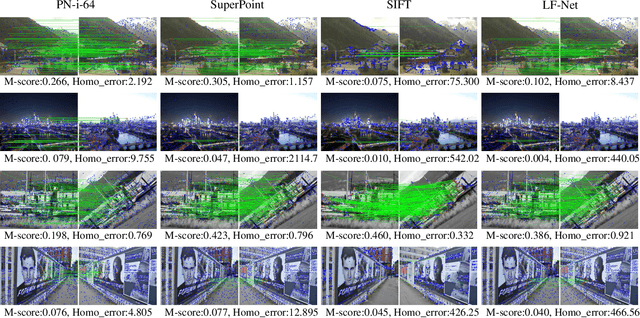

Abstract:This paper presents an entirely unsupervised interest point training framework by jointly learning detector and descriptor, which takes an image as input and outputs a probability and a description for every image point. The objective of the training framework is formulated as joint probability distribution of the properties of the extracted points. The essential properties are selected as sparsity, repeatability and discriminability which are formulated by the probabilities. To maximize the objective efficiently, latent variable is introduced to represent the probability of that a point satisfies the required properties. Therefore, original maximization can be optimized with Expectation Maximization algorithm (EM). Considering high computation cost of EM on large scale image set, we implement the optimization process with an efficient strategy as Mini-Batch approximation of EM (MBEM). In the experiments both detector and descriptor are instantiated with fully convolutional network which is named as Property Network (PN). The experiments demonstrate that PN outperforms state-of-the-art methods on a number of image matching benchmarks without need of retraining. PN also reveals that the proposed training framework has high flexibility to adapt to diverse types of scenes.
 Add to Chrome
Add to Chrome Add to Firefox
Add to Firefox Add to Edge
Add to Edge